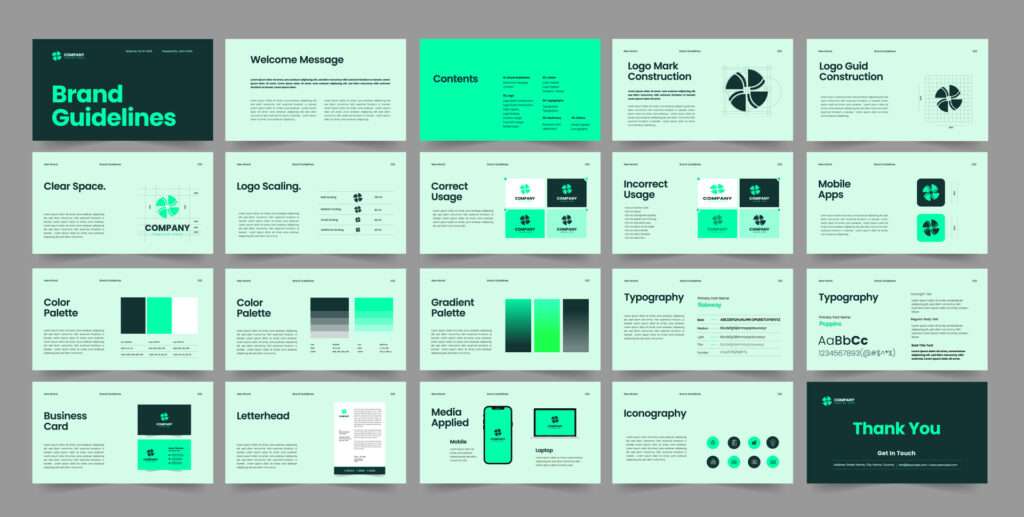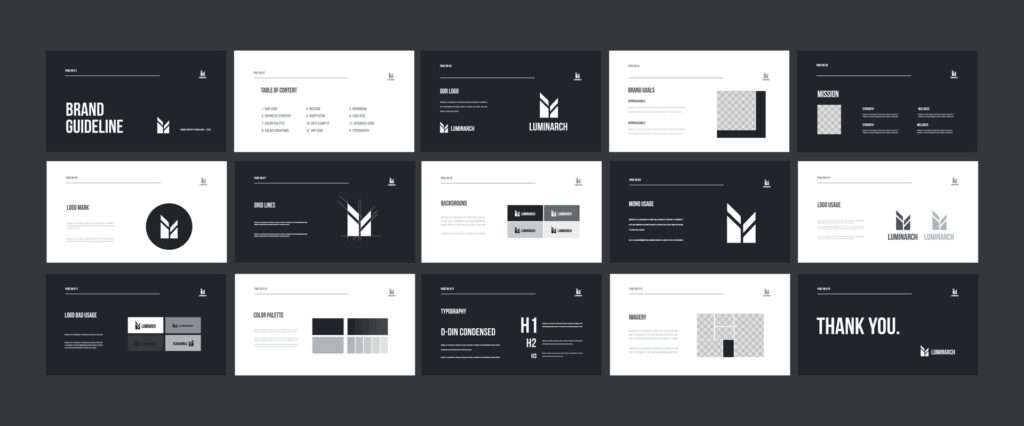

In today’s competitive market, a strong visual brand identity is essential for standing out and making a lasting impression. A well-crafted visual brand guideline ensures consistency across all platforms, fostering brand recognition and trust. Here’s how to create an effective visual brand guideline that sets your brand up for success.
1. Understand Your Brand Core
Before diving into visuals, define what your brand stands for. Clarify your mission, values, target audience, and personality. This foundation influences every visual element and ensures your branding reflects your brand’s voice.
2. Develop Your Logo and Logo Usage
Your logo is the cornerstone of your visual identity. Design a versatile logo that works across various sizes and backgrounds. Include clear instructions on correct and incorrect logo usage, spacing, and placement to maintain consistency.
3. Choose a Consistent Color Palette
Select primary and secondary colors that embody your brand’s personality. Provide color codes in RGB, CMYK, and HEX formats for digital and print use. Specify how and when to use each color to foster visual cohesion.
4. Define Typography
Choose fonts that align with your brand’s tone—be it modern, classic, playful, or professional. Specify font families, sizes, line spacing, and hierarchy for headings, subheadings, and body texts. Include examples to guide consistent usage.
5. Establish Visual Elements and Style
Detail other visual elements like icons, illustrations, photography style, and patterns. Set guidelines for image tone, composition, and filters to ensure all visuals align with your brand voice.
6. Create Sample Layouts and Templates
Showcase examples of how your brand elements come together. Provide templates for business cards, letterheads, social media posts, and presentations. This helps teams and partners understand how to apply guidelines in real-world scenarios.
7. Set Usage and Do’s/Don’ts
Clearly outline what is acceptable and what isn’t when applying your visual elements. This prevents misrepresentation and maintains brand integrity.
8. Maintain Flexibility and Update Regularly
Ensure your guidelines are adaptable to future trends or changes. Regularly review and update the document to stay relevant and cohesive.

Final Thoughts
A comprehensive visual brand guideline is more than just a document—it’s the blueprint for your brand’s visual communication. By investing time and effort into creating clear, consistent, and comprehensive guidelines, you lay the foundation for a recognizable and trustworthy brand identity that resonates with your audience.


